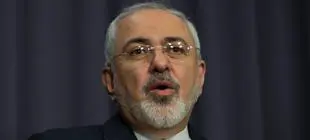Consumer prices in China hit the highest level this year while deflation risks in industrial production loomed larger, signaling a need for continued easing policies.
The National Bureau of Statistics (NBS) announced on last Thursday that China's consumer price index (CPI), the main gauge of inflation, climbed to 2 percent in August, the highest level in 2015.
The figure was up from a predicted 1.9 percent and the 1.6 percent recorded in July. On a monthly basis, the CPI rose 0.5 percent in August, according to the NBS. NBS statistician Yu Qiumei attributed the pick-up to higher food prices, including vegetables and pork.
The price of China's favorite meat is one of the most important factors the NBS considers when formulating the CPI. Pork prices climbed sharply by 19.6 percent year on year in August. Since 2015, pork prices have risen as a result of a decline in pig breeding.
Low prices last year and rising feed prices have left farmers less willing to raise pigs. Pork prices surged more than 20 percent between March 20 and July 17 this year, according to data provided by the Ministry of Commerce.
Non-food inflation remained subdued at 1.1 percent in August, unchanged from July. Zhu Baoliang, an economist with the State Information Center, a government think tank, said favorable factors remain to keep inflation under control, including an expanding service industry and a government determined to deliver on its reform promises.
He predicted the inflation rate in the second half of the year will not exceed 2 percent. The Chinese government aims to keep consumer inflation at around 3 percent for 2015.
The producer price index (PPI), a measure of costs for goods at the factory gate, fell 5.9 percent year on year in August, widening from the 5.4-percent drop seen a month earlier, NBS data showed.
The August reading slumped to its lowest level since the end of 2009, marking a 42nd straight month of decline. For the first eight months, PPI averaged a 4.9-percent year-on-year drop.
On a monthly basis, the index fell 0.8 percent in August. NBS statistician Yu Qiumei attributed the PPI contraction mainly to dropping prices of industrial products and decreasing costs for oil and natural gas production.
"Domestic demand remained sluggish, and commodity prices were on the decline. China still faces grim deflation risk and more easing polices are needed," noted Qu Hongbin, chief China economist at HSBC.
A combination of deflation risks and a slowing economy has troubled China as it tries to re-tool its economy for slower but more sustainable growth based on more sophisticated industries.
Foreign trade in August dropped 9.7 percent year on year to 2.04 trillion yuan (320.8 billion U.S. dollars).
Exports fell 6.1 percent year on year to 1.2 trillion yuan while imports slumped 14.3 percent to 836.1 billion yuan, official data showed Tuesday. Facing lingering downward risks, authorities have ramped up efforts to prop up the economy.
China has cut the reserve requirement ratio (RRR) of banks four times in nearly seven months and cut interest rates five times in nearly nine months.
China's banking and housing regulators slashed down payment requirements for second home purchases using housing provident funds to 20 percent from 30 percent at the end of August, provided the buyers have paid off the mortgages on their first home, to step up recovery of the property sector.
The Ministry of Finance on Tuesday also released fresh fiscal stimulus policies to stabilize growth, such as coordinating funds to accelerate project construction, activating idle money and widening tax breaks.
Liu Ligang, chief economist for the Greater China Region of ANZ Bank, said further policy easing is needed to stave off the risk of a vicious cycle of slower growth and deflation.
He said he expects the central bank to cut the RRR by another 50 basis points by the end of the year.
 简体中文
简体中文

